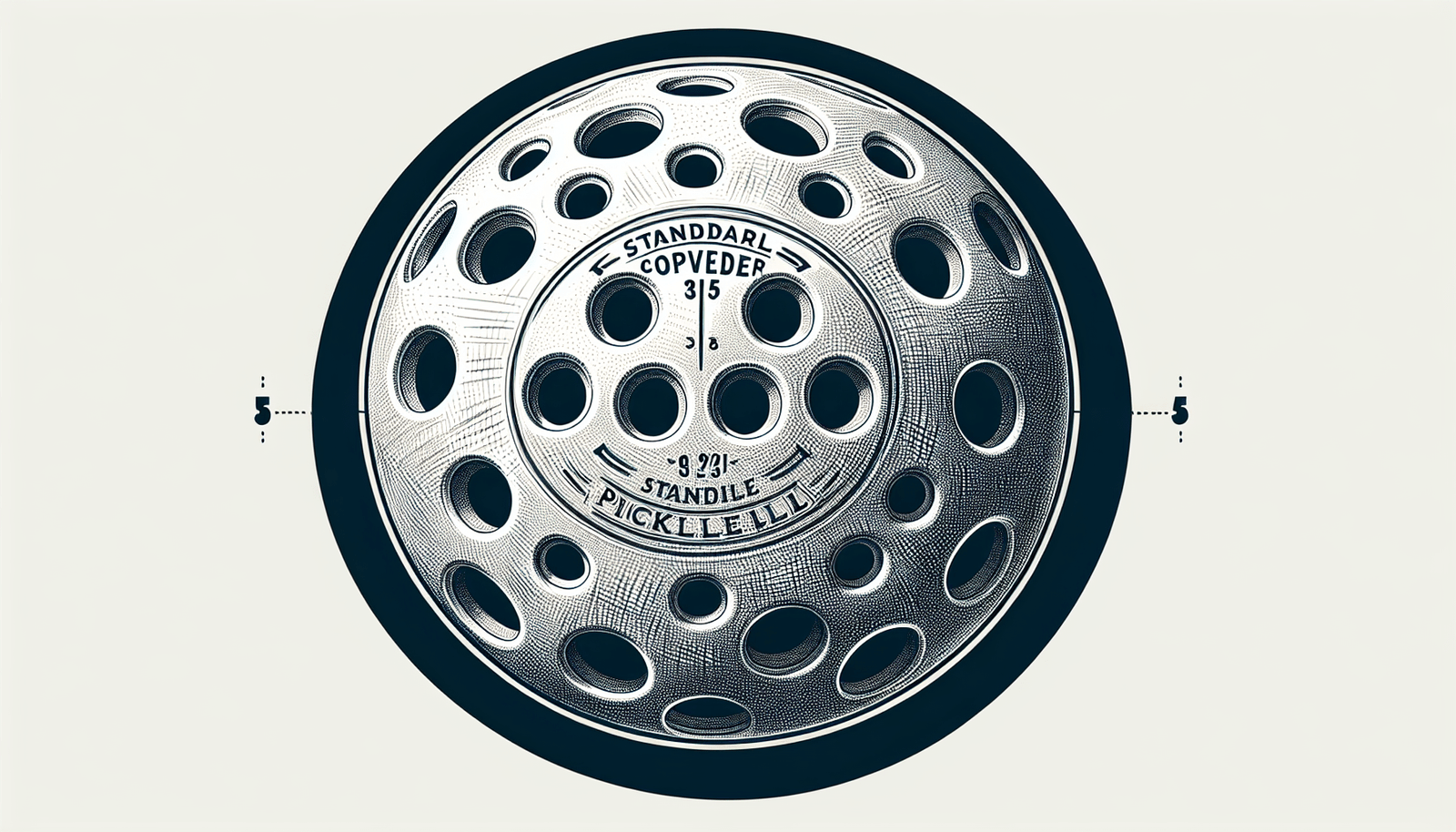Welcome to the ultimate guide on the official specifications of a standard pickleball! Delve into the components that make up this beloved sport’s essential equipment, from the material used for the ball to the precise dimensions required for tournament play. Gain insight into the intricate design of a pickleball and discover why these elements are crucial for players of all skill levels. Whether you’re a novice player or a seasoned pro, understanding the anatomy of a standard pickleball will enhance your game and appreciation for this growing sport. Let’s explore what makes this small but mighty ball a key player in the world of pickleball.
Unveiling the Official Specifications: The Anatomy of a Standard Pickleball
Have you ever wondered what goes into making a standard pickleball? Whether you’re a seasoned player or just starting out, understanding the official specifications of a pickleball can help improve your game. Let’s dive into the details and explore the anatomy of a standard pickleball.
What is a Pickleball?
Before we delve into the specifications of a standard pickleball, let’s first define what a pickleball is. A pickleball is a paddle sport that combines elements of tennis, badminton, and table tennis. The game is typically played on a court with a net, and players use a paddle to hit a perforated plastic ball over the net.
The Core of a Pickleball
The core of a pickleball is one of the most important components of the ball. It is responsible for determining the overall feel and performance of the ball during gameplay. The core is typically made of polymer materials and is designed to provide the right combination of bounce, durability, and responsiveness.
The Cover of a Pickleball
The cover of a pickleball is another crucial element that influences the ball’s performance. The cover is the outer layer of the pickleball and is designed to protect the core while also providing a smooth surface for play. Most standard pickleballs have a seamless design, which helps ensure consistency in flight and bounce.
The Holes of a Pickleball
One of the defining characteristics of a pickleball is the presence of holes on the surface of the ball. These holes are strategically placed to reduce wind resistance and improve the ball’s air resistance. The number and pattern of holes can vary depending on the brand and model of the pickleball.
Size and Weight of a Standard Pickleball
According to official regulations, a standard pickleball must meet specific size and weight requirements. The diameter of a pickleball should be between 2.87 inches and 2.97 inches, and the weight should range from 0.78 ounces to 0.935 ounces. Ensuring that a pickleball meets these specifications is essential for maintaining consistency and fair play.
Material Composition of a Pickleball
Pickleballs are typically made of a combination of materials to achieve the desired performance characteristics. The core of the ball is usually composed of polymer materials, while the cover is often made of durable plastic. Some manufacturers may also include additives or coatings to enhance the ball’s durability and bounce.
Bounce and Compression of a Pickleball
The bounce and compression of a pickleball play a significant role in the overall feel and playability of the ball. The bounce refers to how high the ball bounces when dropped from a specific height, while the compression relates to how the ball deforms upon impact with the paddle. Achieving the right balance of bounce and compression is crucial for creating a pickleball that is both responsive and consistent.
Durability and Longevity of a Pickleball
Another important consideration when evaluating a pickleball is its durability and longevity. A high-quality pickleball should be able to withstand repeated play without losing its shape or performance. Factors that contribute to the durability of a pickleball include the quality of materials used, the construction of the ball, and the design of the core and cover.
Spin and Control of a Pickleball
Spin and control are essential elements of pickleball that can greatly impact a player’s performance on the court. A well-designed pickleball should offer players the ability to generate spin on their shots and maintain control over the ball during rallies. The surface texture and design of the cover play a significant role in determining the spin and control capabilities of a pickleball.
Choosing the Right Pickleball for Your Game
When selecting a pickleball for your game, it’s essential to consider your playing style, skill level, and preferences. Some players may prefer a pickleball with a softer core for added touch and control, while others may opt for a ball with a higher bounce for increased power. Experimenting with different types of pickleballs can help you find the one that best suits your playing style and needs.
Maintaining Your Pickleballs
To prolong the life of your pickleballs and ensure consistent performance, it’s important to properly maintain and care for them. Store your pickleballs in a cool, dry place away from direct sunlight and moisture. Inspect your pickleballs regularly for signs of wear and tear, such as cracks or deformities, and replace them as needed. By taking care of your pickleballs, you can enjoy many hours of fun and competitive play on the court.
Conclusion
Now that you have a better understanding of the official specifications and anatomy of a standard pickleball, you can make more informed decisions when selecting the right ball for your game. Whether you’re looking for durability, spin, control, or bounce, knowing what goes into making a pickleball can help you enhance your performance on the court. So grab your paddle, find the perfect pickleball, and get ready to serve up some fun-filled matches with friends and fellow enthusiasts.
